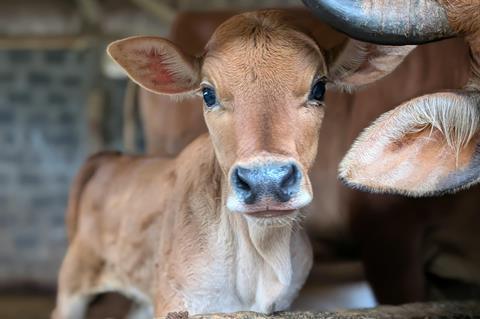A study (DOI: 10.48130/animadv-0025-0026) published in Animal Advances on 03 November 2025 by Jinxin Liu’s team, Nanjing Agricultural University, offers valuable insights into how non-pasteurized milk contributes to the early development of a stable gut microbiota in dairy calves.

By comparing microbial colonization and growth metrics, this research sheds light on how pasteurization influences calf gut health and highlights potential strategies for optimizing calf nutrition.
During the early stages of life, calves are highly susceptible to gastrointestinal infections and diseases, making the development of a balanced gut microbiota essential for their health. Diet plays a crucial role in shaping the microbial communities in the gut, with milk being the primary nutrient source.
READ MORE: Killing H5N1 in waste milk — an alternative to pasteurization
Pasteurization is widely used in dairy farms to ensure the safety of milk by eliminating pathogens. However, this process also affects the microbial composition of milk, potentially limiting the transfer of beneficial microbes to the calf’s gut.
Previous research has focused on the impact of pasteurized colostrum, but there is limited data on the long-term effects of pasteurized milk on gut microbiota development. This study addresses this gap by investigating how pasteurized and non-pasteurized milk affect the growth performance and hindgut microbiome of dairy calves.
Newborn calves
To investigate the effects of pasteurized versus non-pasteurized milk on calf health, a longitudinal study was conducted involving 15 newborn dairy calves. Over the course of one month, the growth performance of the calves was monitored, and microbial communities were analyzed using 16S rRNA sequencing and microbial cultivation techniques.
The results revealed no statistically significant difference in growth performance between calves fed pasteurized and non-pasteurized milk, though a slight numerical increase was observed in the non-pasteurized group.
Additionally, the study examined short-chain fatty acids (SCFAs) in calf feces, with isovaleric acid being significantly higher in calves fed pasteurized milk, indicating a shift in microbial activity. Further analysis of the gut microbiota revealed that non-pasteurized milk promoted a more stable microbial community, particularly enhancing the abundance of Lactobacillus species such as Limosilactobacillus reuteri (L. reuteri).
Microbial composition
The study used logistic regression and ANCOM-BC analysis, which confirmed that Lactobacillus was significantly more abundant in calves fed non-pasteurized milk. This difference in microbial composition was particularly noticeable on the first day after birth, with microbial density higher in the non-pasteurized group.
Moreover, the research showed that pasteurization did not affect the key carbohydrates in milk, suggesting that the reduced microbial diversity in pasteurized milk likely resulted from the inactivation of beneficial bacteria, such as Lactobacillus. Whole-genome sequencing of L. reuteri strains confirmed the transmission of these beneficial microbes from milk to the calf hindgut. Strains of L. reuteri from both milk and feces were found to have similar genetic profiles, reinforcing the role of milk as a carrier of beneficial microbes.
This study highlights the impact of pasteurization on microbial diversity in dairy calves, underlining the importance of balancing pathogen safety and microbial health. The findings suggest that while pasteurization prevents pathogen transmission, it also reduces beneficial microbial transfer, potentially affecting gut development.
In conclusion, this study highlights the complex relationship between pasteurization and gut health in dairy calves. While pasteurization is essential for pathogen control, it may also limit the transfer of beneficial microbes. By understanding these dynamics, dairy farmers can better tailor feeding practices to support the health and development of their calves, ultimately leading to healthier herds and more sustainable dairy production systems.







No comments yet